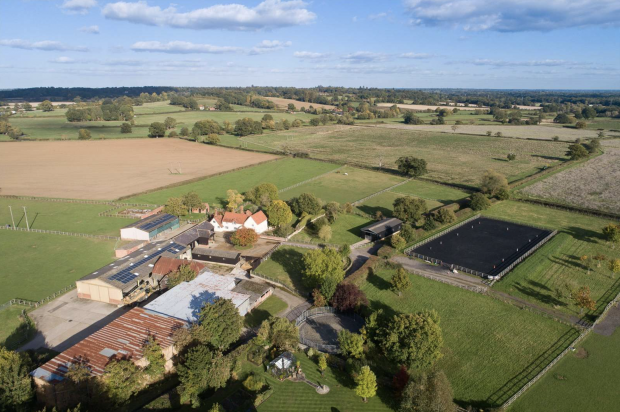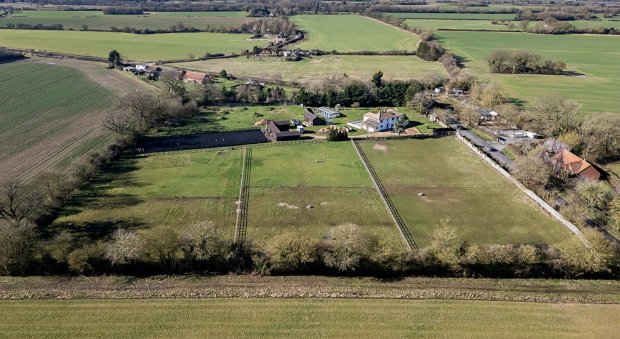Read the latest newspaper reports and you’ll believe that the British property market is behaving like a crazed yo-yo. For every headline touting an upturn, another predicts doom and disaster.
The truth, according to specialist estate agents, is a lot less dramatic. Prices are solid and stable and the market is “steady”, according to Richard Nocton, of Woolley & Wallis, who sees neither “colossal peaks nor troughs”.
“It is quite firm,” agrees William Grant of Fox Grant. “It may be creeping up a little bit but it isn’t running away.”
The latest figures from the Horse & Hound property index, which tracks advertisements in the magazine, support this analysis. They show that the middle price for the equestrian properties advertised in Horse & Hound is £799,500. This represents a 7% increase over last year, which is healthy, but hardly anything to write home about.
This simple number, however, hides a much more complex picture. On average, prices are slightly higher, but the number of houses available appears to be lower than last year. This is because, across the country, the supply of good equestrian homes remains tight.
“We’re looking at lots of stuff with pony paddocks, but the market is very short of properties,” confirms William Grant.
This is particularly true at mid-market level, according to the Horse & Hound index. Homes priced between £500,000 and £750,000 — the most popular range in the first four months of last year — seem to have virtually vanished from the market. They declined from more than a third of all properties advertised in the magazine between January and April 2005, to not even a fifth for the same period in 2006.
Competition for good homes is inevitably nudging prices upwards. “Since autumn last year, we’ve seen a relentless demand from buyers wanting equestrian properties,” says David Rumsey of Pelhams. “However, the demand has far outweighed the supply, resulting in a steady rise in prices. We envisage a very strong demand for any new property coming on to the market and, for a number of these, the buyer would have to show they are in a strong position to proceed with a purchase if they were to make an offer.”
If growth remains within the realms of the reasonable, it is chiefly because prospective purchasers are more sensible than in the heady days of the early Noughties, and are definitely not prepared to pay over the odds for any old property. And, as Zoe Napier of Fenn Wright says: “Vendors are understanding that overpriced houses do not sell.” Nevertheless, up prices go at a steady pace.
The Horse & Hound index shows that more than a quarter of all the properties advertised in the magazine between January and April 2006 fall firmly in the £750,000 to £1m range, which in the same period last year accounted for just over a fifth of the total. And higher segments — £1m and above — have all recorded increases.
But prices are also failing to stretch as far as in the past. Last year, houses in the £750,000 to £1m bracket had an average of 21 acres of land, whereas in the early months of 2006 they came with only 12 acres. Obviously just how far money will go varies from region to region.
This year’s median price of £799,500 will buy a four-bedroom house with six boxes, hay barns, a manège and 20 acres in Kent. In Surrey it will purchase a farmhouse of similar size, with a one-bedroom bungalow, outbuildings, eight stables and just over six acres.
Throughout Britain, however, “quality stuff is selling very well”, according to William Grant. “There are a lot of buyers and for virtually every sale we have five bidders,” he says.
Elsewhere, Zoe Napier reports that homes are selling within two to six weeks. Again, although the figure is not comparable to the record turnarounds of the boom days in the early 2000s, it is still an indication of hungry buyers wanting to close quickly.
In theory, all these factors put the market very firmly in the hands of sellers. Despite this obvious enticement, however, many people remain wary of putting their homes up for sale. Agents believe this has multiple reasons. First, the widespread home shortage means potential vendors are themselves struggling to find a place to move on to, and therefore decide to postpone the sale until the rosier days of plentiful supply.
This supply shortage has also affected the geographical spread of equestrian homes. Counties such as Wiltshire, Berkshire and Hampshire, which had the lion’s share of properties for sale in the first four months of last year — accounting for nearly a third of all homes advertised in Horse & Hound — have significantly dropped in the pecking order. Instead, Surrey, Essex and Warwickshire are now the top three locations, totalling more than 40% of all adverts.
Because homes are so scarce, availability will invariably dictate the strength of the market going forward. William Grant is confident more vendors, encouraged by the favourable trading conditions, will take the plunge and put their homes up for sale during the summer months.
“I think it will come,” he says, reporting “valuations are definitely up”.
|
SUBSCRIBE TO HORSE & HOUND AND SAVE Enjoy all the latest equestrian news and competition reports delivered straight to your door every week. Click here to subscribe now and enjoy 18 issues FREE
|




